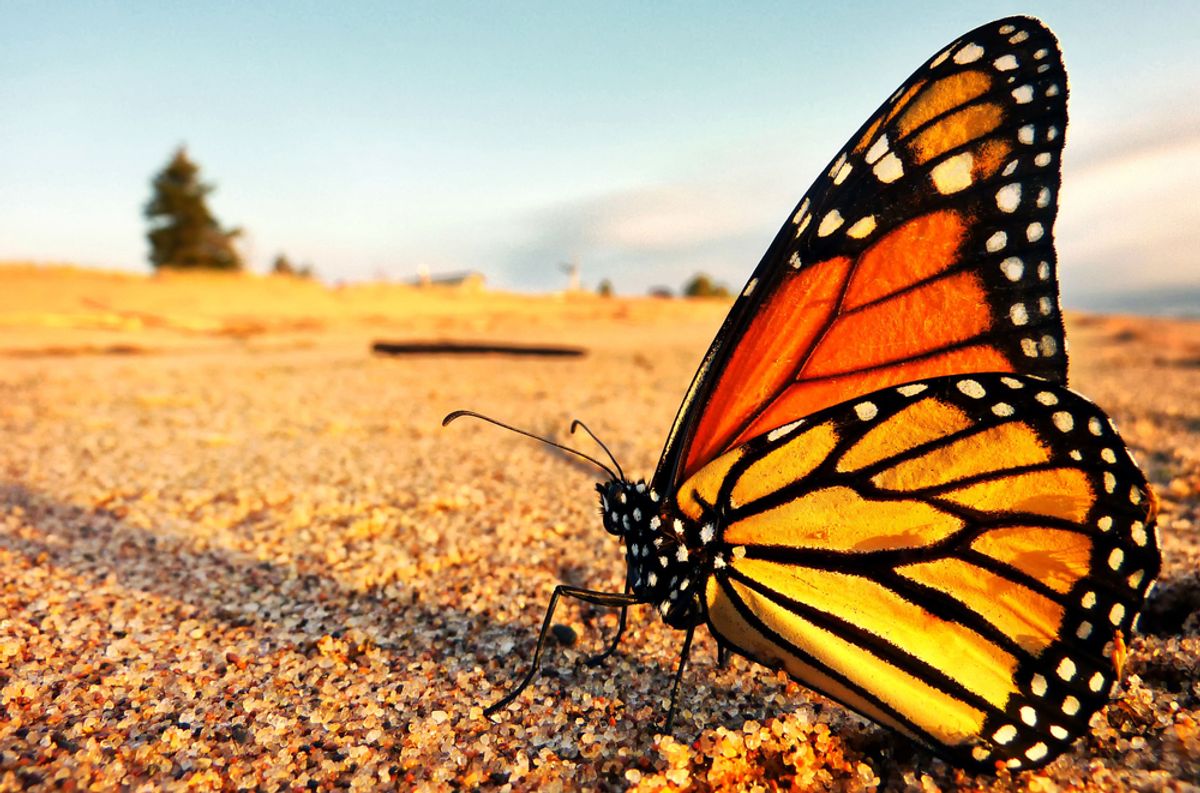If you read Salon's interview last weekend with Chip Taylor of Monarch Watch, you already know that modern agriculture is no friend to the monarch butterfly. Our use of herbicide-resistant crops, along with the rapid conversion of habitat to cropland, has eliminated a huge proportion of milkweed -- on which monarch caterpillars are entirely dependent -- from the American Midwest. And while a number of other things could be hurting the butterfly population, too, none seem to come close to the effect that loss has had.
Just to be sure, researchers at the University of Guelph revisited the issue, taking a number of those potential factors, such as climate change and the loss of habitat in Mexico, into account. As Ars Technica reports, they confirmed that agriculture is the problem, much more so than the loss of habitat in Mexico:
Their conclusions suggest that we can't blame deforestation in Mexico for this environmental problem. The monarchs are suffering from a lack of milkweed, the only plant the caterpillars eat. In fact, a model built by the researchers suggested that monarch populations were four times more sensitive to the loss of milkweed on their breeding grounds than the loss of the forested habitat in which they spend the winters.
The spatial model was built using population dynamics data, which incorporated locations and life stages, known survival rates at different stages, and standard reproductive success. It used this data to predict how various changes in the system, from climate to habitat, would affect the insects' complex lives.
Using their model, the scientists found a 21 percent decline in milkweed abundance between 1995 and 2013. The largest declines, in the midwest, line up with the largest declines in butterfly population.
So while efforts to restore habitat in Mexico are important, planting more milkweed would definitely seem to be the best solution. As to why this is a problem worth solving, Taylor, again, put it best:
"We can’t just convert everything into an agricultural field or an urban environment. We have to maintain the wildlife out there. This is as fundamental as our relationship with nature, but also the reality is about 70 percent of that native vegetation out there is insect pollinated and if you don’t have the insects, you lose the plants, and if you don’t have the plants you lose the things that feed on those plants. So we’ve got to keep this system together. People don’t understand this, but everything’s connected out there and we have to maintain those connections."

Shares